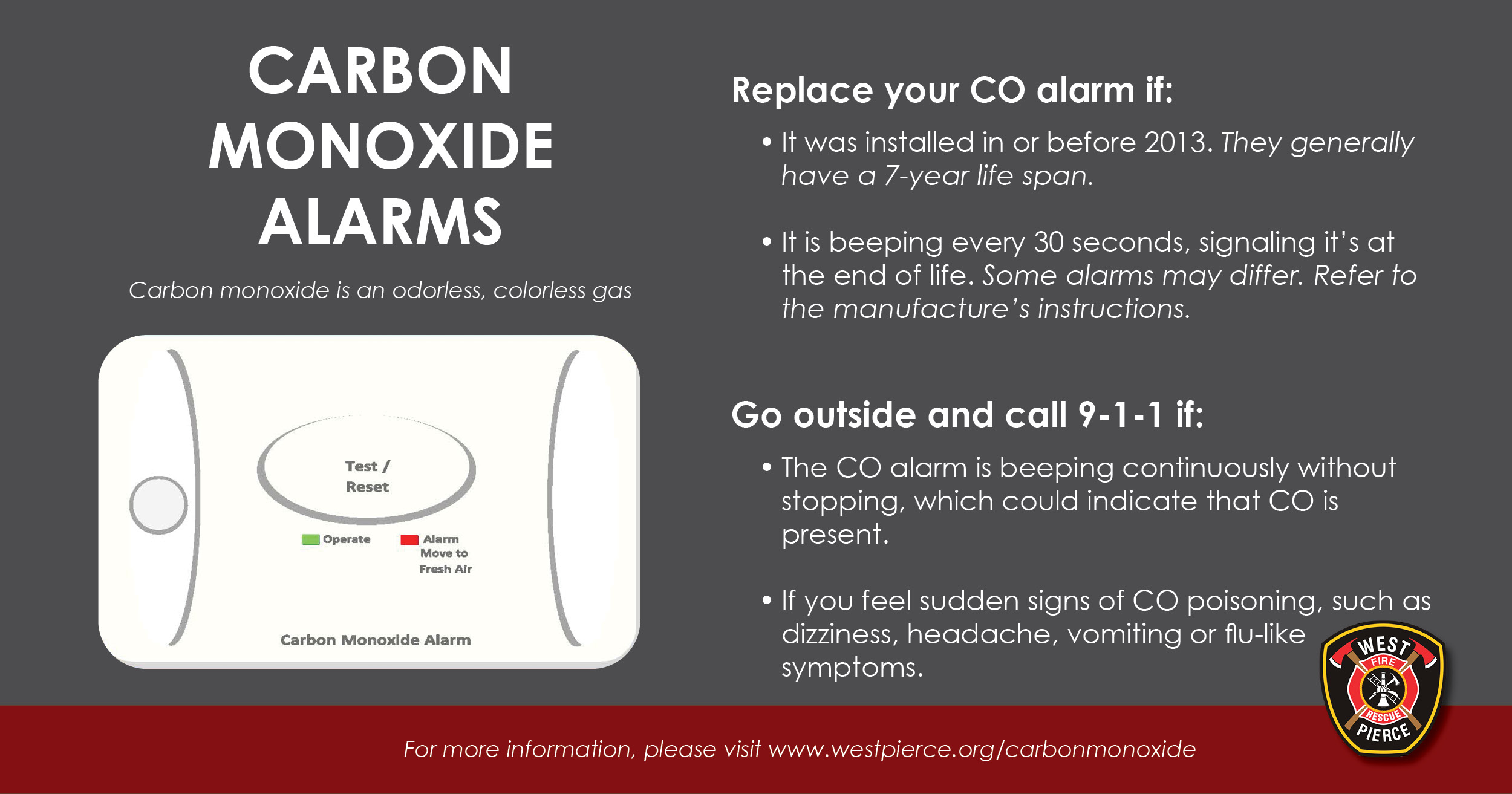Carbon monoxide, or CO, is a poisonous gas that cannot be seen or smelled and can kill a person in minutes. Carbon monoxide can quickly build up to unsafe levels in enclosed or semi-enclosed areas.
What are some common sources of carbon monoxide?
Carbon monoxide is produced by incomplete combustion from cars and trucks, small gasoline power equipment like weed trimmers and chain saws, boat engines, gas and camp stoves, lanterns, burning charcoal and wood, and gas ranges, ovens, or furnaces. Tobacco smoke is a significant source of carbon monoxide in homes with smokers.
What are the symptoms of carbon monoxide poisoning?
Common initial symptoms are headache, dizziness, fatigue, weakness, confusion, and nausea. Low-level carbon monoxide poisoning can be difficult to diagnose because the symptoms are like other illnesses, such as the flu. The following could be a sign of carbon monoxide poisoning:
- Symptoms go away when you leave your home and come back when you return.
- Everyone in the home has similar symptoms at the same time.
- Breathing in high levels of carbon monoxide can cause loss of consciousness and death. People who are sleeping can die from carbon monoxide poisoning before ever knowing they are being exposed to the gas.
What should be done if you suspect someone has carbon monoxide poisoning?
Immediately go outside to get fresh air. Call 9-1-1.
- If someone is unconscious and cannot leave, open windows and doors to bring in fresh air. Turn off the source of carbon monoxide. Go outside for fresh air. Call 9-1-1.
- After calling 9-1-1, do a head count to check that all people are accounted for. Don’t reenter the building until emergency responders have given you permission. You could lose consciousness and die if you go back in without knowing if it’s safe.
- If the source of the carbon monoxide is a malfunctioning appliance, don’t use that appliance until it has been fixed by a trained professional.
Should I install a carbon monoxide alarm?
Yes, these detectors are similar to smoke alarms and can warn you when carbon monoxide levels become unsafe. If the alarm goes off, evacuate the building and call 911. Follow the carbon monoxide detector instructions for routine maintenance, including regular replacement of batteries. If the carbon monoxide detector is wired to the electrical supply, make sure it has back-up batteries for when the electricity is off.
Washington State law (RCW 19.27.530) requires carbon monoxide alarms to be installed in new residences. As of January 1, 2013, carbon monoxide alarms are required in existing apartments, condominiums, hotels, motels, and single-family residences, with some exceptions. Owner-occupied single-family residences, legally occupied before July 26, 2009, are not required to have carbon monoxide alarms until they are sold. For more information on the carbon monoxide alarm requirements, contact your local building code official or visit our Carbon Monoxide Alarm Requirements page.
Motor homes and boats should also have carbon monoxide alarms.
How do I prevent carbon monoxide poisoning during a power outage?
- Never use a charcoal or gas grill in an enclosed space, such as inside your home, garage, or in a tent or camper. Click here for the Washington State Department of Health’s fact sheet, which is available in multiple languages, on preventing carbon monoxide poisoning during a power outage.
- Don’t burn charcoal in your fireplace. A charcoal fire will not create a chimney draft strong enough to push the carbon monoxide to the outside.
- Never use a generator inside your home, garage, carport, basement, or near an outside window, door, or vent. One gas powered generator can produce 100 times more carbon monoxide than a car’s exhaust. Generators should be at least 20 feet away from buildings. Even at 20 feet away, air flow patterns could still blow carbon monoxide into homes through attic vents, windows, or doors, so it’s very important to have a working carbon monoxide detector inside the home. Get tips on using a generator during a power outage.
- Never use a gas range or gas oven to heat your home.
- Never sleep in a room while using an unvented gas or kerosene heater.
